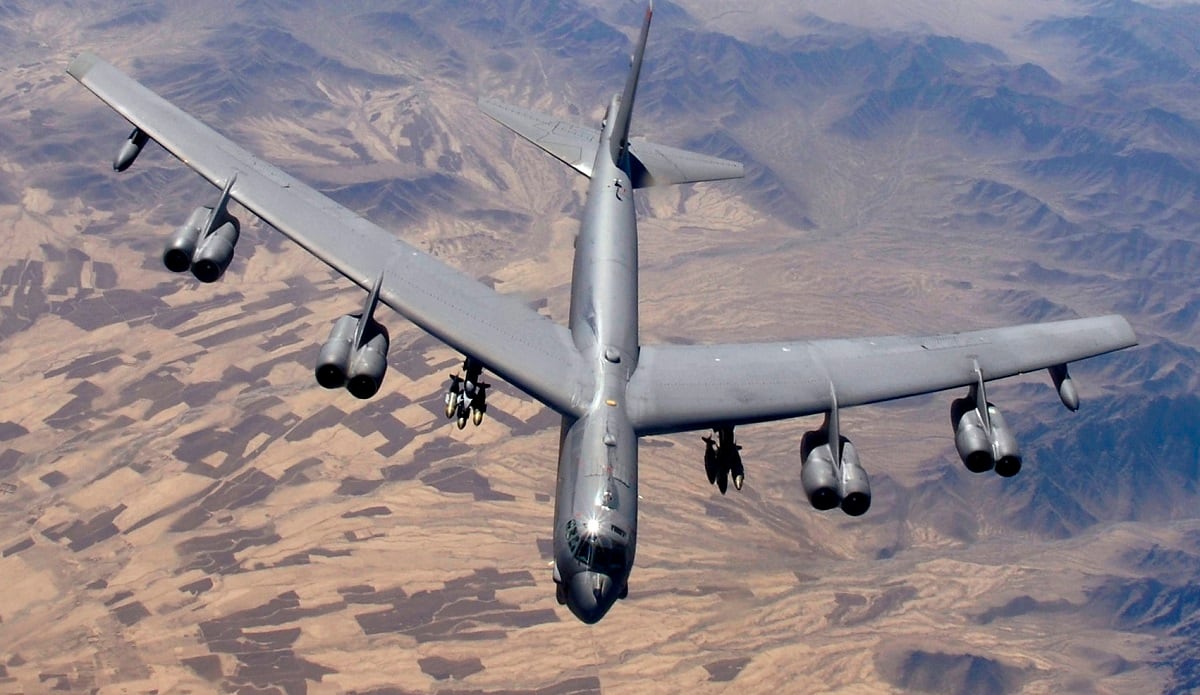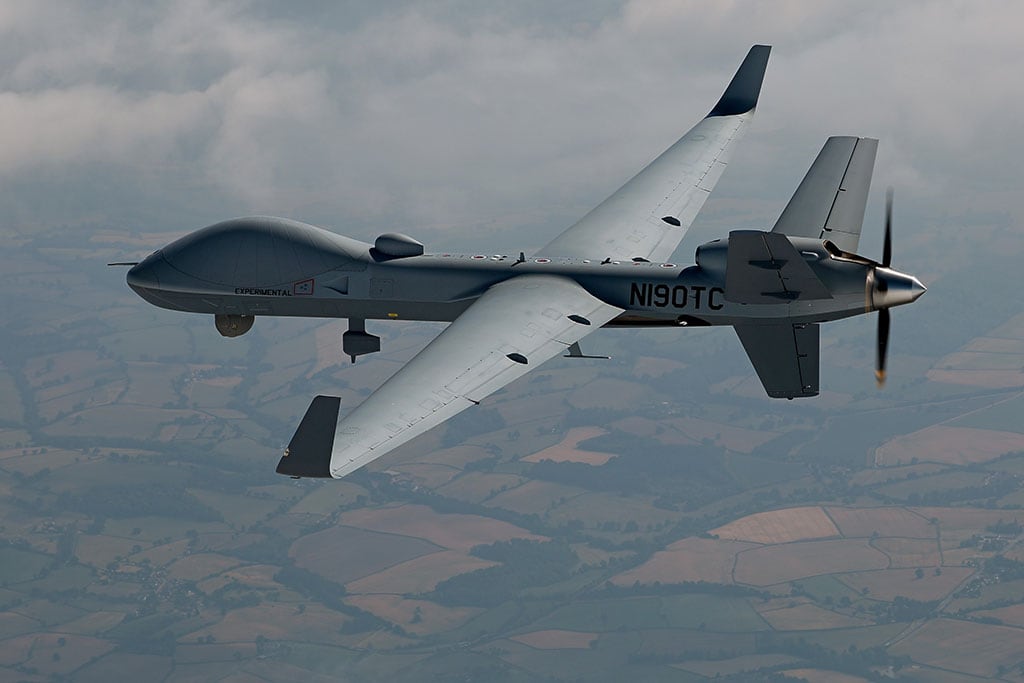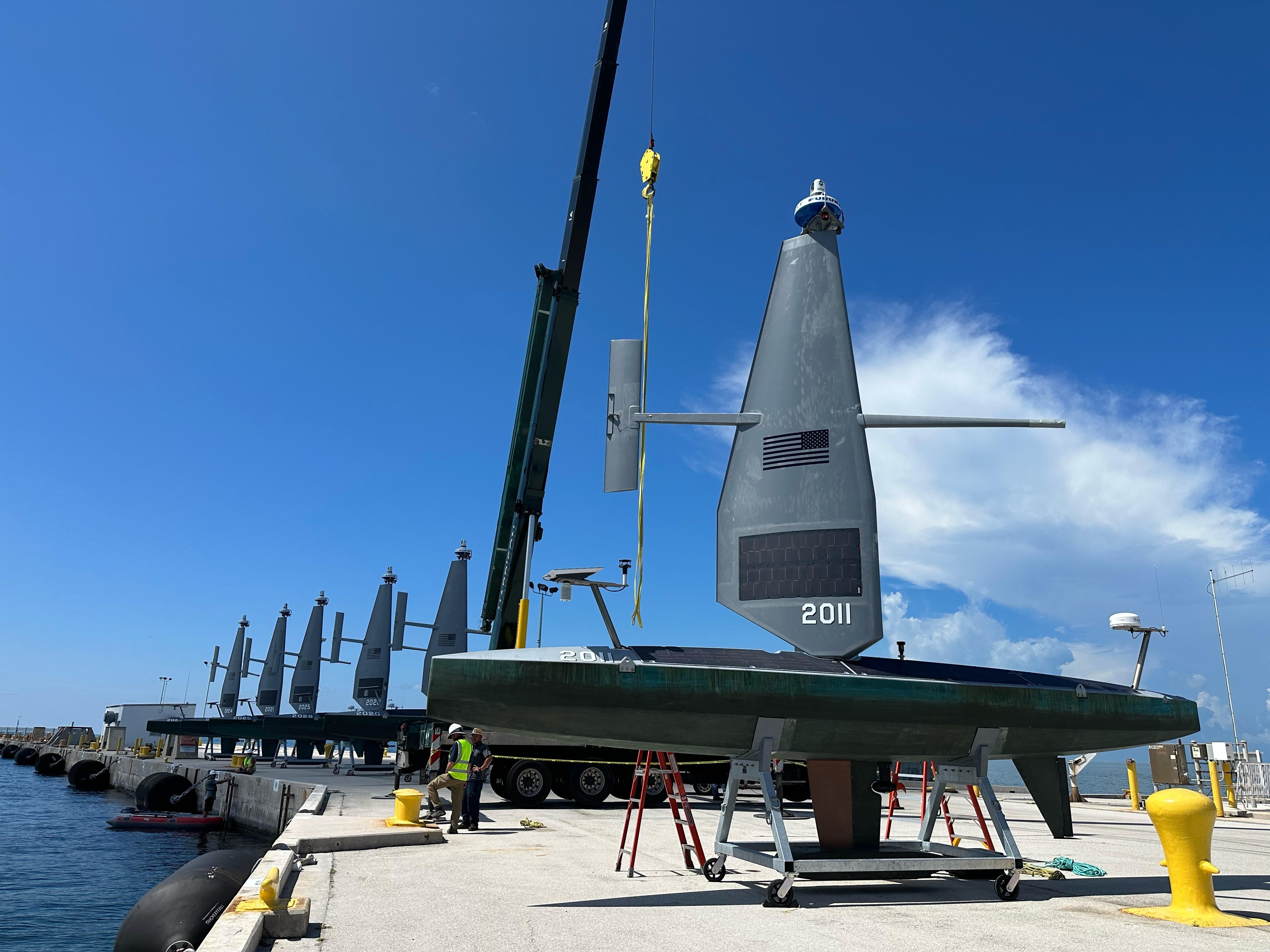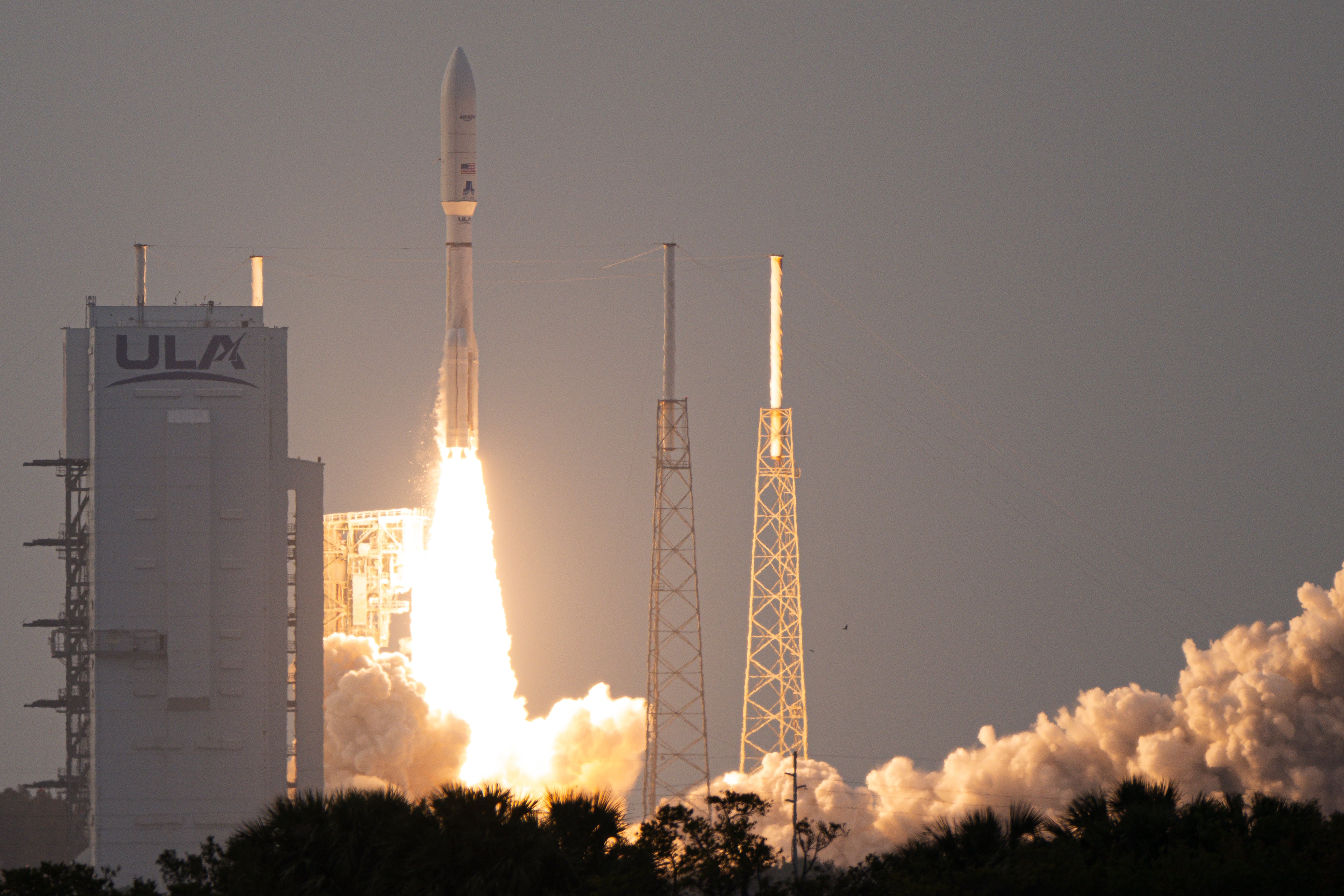DAYTON, Ohio — When the U.S. Air Force and Northrop Grumman developed the T-38 training jet in the mid-1950s, they lacked access to digital engineering tools. There were no advanced virtual models of the aircraft’s design, nor high-speed computing technology to test aerodynamic characteristics early in the development process.
A lot has changed in seven decades.
When the service awarded Boeing a $9.2 billion contract in 2018 to replace the aging training jet with the T-7 Red Hawk, the company’s decision to heavily rely on new design and manufacturing techniques made the program the poster child for the potential of digital engineering.
From the start, Boeing used advanced manufacturing and digital modeling tools to improve the way it designs and tests the T-7. Rather than send aircraft models to a wind tunnel for early testing, the program used high-speed computing, shortening the usual concept-to-design process by about nine months. With digital designs on hand earlier, the program’s engineers as well as its production and flight teams could better collaborate and anticipate problems, reducing the need for rework.
All told, Boeing estimates its use of virtual models and 3D tools slashed assembly hours by 80% and halved the time needed for software development.
The Air Force also saw similar wins on other major programs including Sentinel, which will replace the Minuteman III intercontinental ballistic missile, and its effort to install new wings on the A-10 attack aircraft. Those successes are, at least in part, an outgrowth of a 2018 push within the Pentagon to modernize acquisition and sustainment processes by establishing digital infrastructure, formalizing the use of model-based systems engineering across the services and making deliberate cultural changes to promote innovation.

Siloed organizational constructs and funding processes have made it difficult for the Air Force to transport lessons learned from programs like the T-7 across its broader portfolio of programs. Not all acquisition offices have the funding to buy the necessary software tools, and inflexible policies can make it harder to transition long-held processes.
In 2020, the service launched a grassroots initiative dubbed Digital Campaign to implement these shifts. While the effort helped build momentum toward change within the service, it lacked a full-time, dedicated team. So, last summer, the Air Force created the Digital Transformation Office to address some challenges that accompany shifts to new ways of operating, while also unifying the service’s digital integration efforts.
Kyle Hurst, chief of the DTO, recently told C4ISRNET his team spent its first year focused on identifying the roadblocks program offices face as they try to adapt from traditional processes — and finding ways to address them across the acquisition enterprise.
“There’s a huge passion and drive to get after this,” Hurst said in an Aug. 19 interview. “There is also a huge [number] of roadblocks and barriers in the way.”
Hurst lauded the success of the program offices that have successfully implemented digital engineering, noting that the approach helped the A-10 team shave a year off its re-winging schedule, and allowed the Sentinel program to optimize and refine its design early in the acquisition process.
However, he said, that positive progress must be scaled and applied across the service.
“The thing that should be frustrating to the Air Force is that it happens for [a] program and no one else can leverage that benefit,” he said. “Our big mission is: How can we get those lessons learned, those tools that they’re using, and really scale them across the acquisition community?”
‘There is no spoon’
When the Air Force launched its digital campaign in September 2020, it released a 19-page document that cast a vision for moving its development, production and sustainment activities into digitally simulated, connected environments. The paper, titled “There is No Spoon: The New Digital Acquisition Reality,” leaned heavily on references to The Matrix — a 1999 science fiction movie depicting a simulated reality, complete with illusory utensils. It described what the service called “the next big paradigm shift for military tech dominance.”
“In design, engineering, software, manufacturing, testing and sustainment, Matrix-like simulation realism is happening: components and processes rendered so realistically they become digital twins of reality,” the document said. “Like the movie, this means we can learn things in these virtual environments and transfer that learning to the real world.”

Hurst describes the path to that future as a 20-year journey. And today, the service is only about two years in. That early vision helped prioritize digital engineering within the Air Force, but there’s still a lot of foundational work that needs to happen to define how the service will get there.
Defining that longer-term path this early on is a challenge, Hurst said, especially as the Digital Transformation Office is still learning what the service’s needs are and how those play out within individual programs.
“That road map and the struggles we have with how we budget and how we’re so siloed program by program — even at our level, we’re still very much learning what that road map needs to look like as we immerse ourselves with programs,” Hurst explained.
When program officers and contractors ask the office for a detailed road map, he usually emphasizes the need for reliable, flexible funding mechanisms, foundational infrastructure, and digital tools.
Because the DTO has only existed for one year and is still articulating its long-term road map, it has struggled to secure enterprise-level funding for its digital acquisition initiatives. Instead, money is budgeted by individual program offices based on their resources and how they prioritize digital engineering.
“The Sentinel program has a very good cache of software tools that they can use and do their development with,” Hurst said. “A lot of other programs that aren’t so well funded don’t have that.”
Gen. Duke Richardson, head of Air Force Materiel Command, acknowledged to reporters during an Aug. 11 briefing at the Life Cycle Industry Days conference in Dayton, Ohio, that there’s a “pay to play” model by which programs that prioritize funding for digital tools are the ones that benefit.
He said the command’s intent is that digital engineering — and the tools that enable it — become “part of the natural course of business.”
More accessibility
One solution the Digital Transformation Office is advocating for is the creation of a cloud-based ecosystem that would host tools, making them available to program offices based on their needs. Hurst said the office is working with the Air Force’s Command, Control, Communications, Intelligence and Networks Directorate at Hanscom Air Force Base in Massachusetts to establish a central and accessible hub for those tools.
The office is also working to change the approval process for buying new software tools. Today, if a program office wants a new piece of software approved for government use, it ends up going through a process exceeding 18 months. Often, Hurst said, a new version of the software was released while the team waited for the OK to move forward.
DTO established a team to map that process and identify ways to improve it.
One of the issues, which stemmed from each Air Force base operating on a different network, is the numerous approval mechanisms for acquiring software. But now that the Air Force operates on a single network, Hurst said, it makes sense that instead of having 109 bases with just as many approval processes, the service should consolidate that authority to the handful of installations focused on acquisition.
Hurst said the office is planning a pilot effort to better understand the current approval needs, create a framework that adheres to those policies and demonstrate a more streamlined approach.
Cold War bomber, 21st century tools
While digital tools and processes can improve efficiency and cut time from a program’s schedule, having the ability to model aircraft in a digital environment can fundamentally change how the Air Force designs and tests its systems. Digital replicas can help programs understand how the components of a system interact and operate in a simulated environment, reducing risk earlier in the program before moving to a physical testing phase.
According to Christopher Garrett, a senior-level executive and technical adviser at the Air Force Life Cycle Management Center, this approach of model-based systems engineering is a key enabler for rapid development.
“You can go fast by making sure that you don’t miss the gaps and that you don’t go down a path that is going to be a dead end,” Garrett said in an Aug. 19 interview. “That’s hugely important because we’re constantly going down paths that don’t pan out. We can’t afford to do that.”
As more programs begin to use model-based systems engineering, the Digital Transformation Office is training the workforce on modeling software. Garrett said that while most of the 89,000 personnel in Air Force Materiel Command will not become modeling experts, the goal is to shift the command’s culture so that people have a baseline understanding of how to use these systems.
The Air Force is using digital modeling to develop new aircraft and to upgrade existing systems, like the B-52. The storied bomber, which entered service in the 1950s, is being fitted with new engines, a modern radar system and a slew of other enhancements that the Air Force expects will keep it flying into the 2050s.

Col. Louis Ruscetta, senior materiel leader in command’s B-52 division, told reporters during an Aug. 10 briefing at the Life Cycle Industry Days conference that access to 3D models has helped the program maintain its schedule and anticipate future integration issues.
Ruscetta said he can’t predict whether the modeling tools will shorten the program’s schedule, but he could confirm it’s helping reduce risk by identifying issues earlier in the development process.
“When you find problems earlier, you have much longer to solve them and you can recover quicker, rather than the late problems that arise in other programs,” he said.
Courtney Albon is C4ISRNET’s space and emerging technology reporter. She has covered the U.S. military since 2012, with a focus on the Air Force and Space Force. She has reported on some of the Defense Department’s most significant acquisition, budget and policy challenges.





